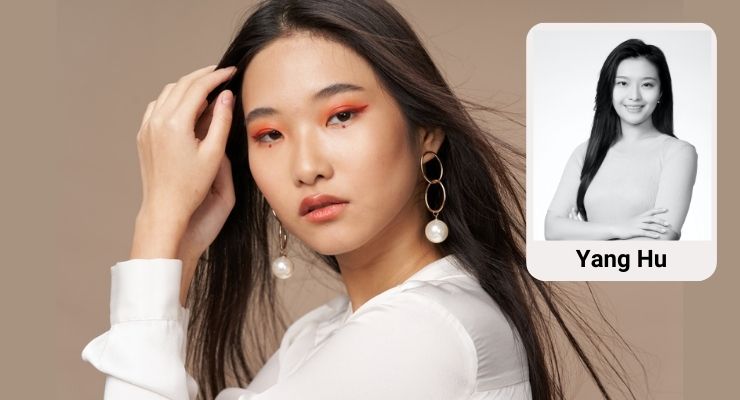Yang Hu, Insight Manager, Euromonitor International07.26.23
A number of Korean beauty brands, including Sulhwasoo and Missha, have recently started to engage Hollywood celebrities as their brand ambassadors.
The trend is a strategic pivot for these K-beauty brands, aimed at slowly diversifying their market base from China to other market. By partnering with globally recognized Western celebrities—and refreshing their packaging with a contemporary, international design aesthetic—these brands aim to dilute their 'Eastern beauty' image.
Before, K-beauty was mainly sought-after by consumers interested in K-pop and beauty culture. Now, localization strategies aim to help to enhance their brand visibility to a wider Western consumer base.
K-Beauty, J-Beauty—& C-Beauty
Now, C-Beauty brands are following suit. What's C-beauty? Locally-born Chinese beauty brands.Despite facing competition from East Asian rivals such as K-beauty and J-beauty, C- beauty brands are exploring various initiatives to establish a unique selling point for international customers.
One example is the utilization of cross-border sellers and beauty influencers who conduct live-selling sessions on TikTok, targeting consumers in the U.S. and Western Europe. These sellers offer affordable prices and a wide range of options.
Another potential avenue for C-beauty products to penetrate foreign markets is through established Chinese retailers like Shein.
In the future, there might be an opportunity for C-beauty brands to gain broader exposure by entering the marketplaces of popular Chinese retailers, such as Shein Marketplace, which recently announced its launch in Brazil and the U.S. This move is expected to provide a significant platform for C-beauty brands to engage with global consumers.
C-Beauty's Rising Sales
A recent in-depth analysis from Euromonitor International has found that sales of C-beauty brands that are among the top 20 brands in color cosmetics—and increased from 14% in 2017 to 28% in 2022, fueled by the aid of digital capabilities, especially during the Covid-19 pandemic in China.The Euromonitor report, “Uncovering C-Beauty: Growth Strategies and Market Outlook” includes in-depth analysis on C-beauty brands and China’s beauty and personal care market, and explores three key categories—the rise of C-beauty; C-beauty seeks to diversify growth capabilities; and outlook and implications.
‘Dupe’ Identity Torn Down
In the past, consumers perceived C-beauty as the “cheaper substitute” or “dupe” for international brands.During the past five years, however, multi-brand C-beauty companies such as Jala and Proya have shown potential through new product development and marketing strategies targeting younger generations. Emerging new brands such as Winona and Florasis have pushed ingredient and product format innovation.
Skin Brightening is a Key Consumer Trend
Zooming into consumer trends by claim, Euromonitor research indicates that Chinese consumers desire skin brightening the most across all generation groups.Anti-blemish is the second most desired product feature for Gen Z in China, with many top players at the forefront of this.
A ‘digital first’ environment has also maximized C-beauty's growth, as the e-commerce penetration rate of beauty and personal care products in China reached 42% in 2022. From brick-and-mortar traditional brands to social selling-dominants brands, a large part of sales of C-beauty brands was generated by online engagement and live commerce activities of top influencers.
Challenges for C-Beauty Lie Ahead
While C-beauty brands have shown strong growth momentum, the obstacle of short-life cycles remains a challenge. According to Euromonitor’s "Voice of the Consumer: Beauty Survey 2022," Chinese consumers have relatively lower brand loyalty compared with the world average.The survey shows only 11% of the respondents always buy the same brand/product when it comes to color cosmetics products. Euromonitor believes this is a significant challenge for C-beauty brands to maintain performance and position their brands. With many affordable alternatives in the market, consumers easily switch to other options once the brands suspend advertising or livestreaming shopping promotions.
A Focus on Affordability & Diversity
This is a significant challenge for C-beauty brands to maintain performance in the long-term. With fierce competition in China's domestic market, C-beauty brands are in desperate need of new opportunities and going overseas.However, the lower awareness of C-beauty remains a challenge. Globally, the awareness of K-beauty and J-beauty is over 30% and 20% respectively, whereas C-beauty is only 13%.
The mature and efficient manufacturing network in China has led to a lower entry barrier for beauty brands. Compared to K-beauty and J-beauty, the image of C-beauty is still vague and not powerful enough to naturally form a distinct identity in consumers’ minds.
To tackle this challenge, some C-beauty companies have tried to attract consumers in Western markets by offering affordable prices and diversified choices.
C-Beauty's Opportunity—Premium Fragrance?
Consumers tend to choose value for money and good quality products. Brands could benefit by focusing more on substantive innovations and resonating with a strong brand story to develop as distinct labels in the minds of global consumers.Exploring market potential in a new category is one solution. Premium fragrances is an unmet category and will become the next sector to see more C-beauty brands thriving.
Riding on a trend that China's young middle-class consumers crave a richer expression of a sophisticated lifestyle in their daily lives, the potential in China’s fragrance market is growing with the highest CAGR over 2022-2027, with 15%.
To jump the hurdle from ‘affordable product’ to ‘powerful brand’ and eventually enable ‘C-beauty’ as an influential label to feed more Chinese brands is still the challenge.
Now it’s time to tear off the “dupe” label. By targeting premiumization with exploring new beauty sectors, C-beauty brands will have solid competitiveness for building longer lifecycle C-beauty brands and a further global expansion beyond China.




























